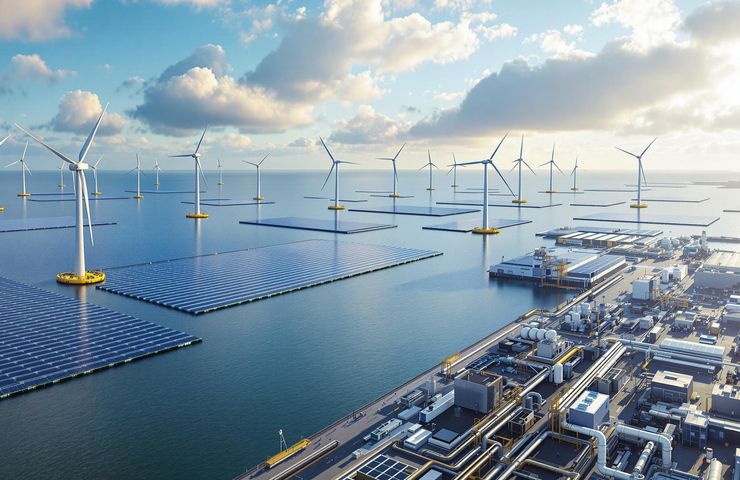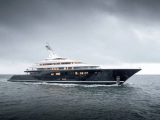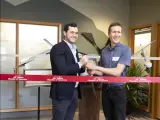
Green Hydrogen Project Zeevonk Advances FEED for Offshore Wind-to-Hydrogen Complex at Rotterdam
August 12, 2025Ever heard of Zeevonk? It’s this partnership between Vattenfall and Copenhagen Infrastructure Partners (CIP) that’s buzzing with activity on the Maasvlakte, right in the Port of Rotterdam. They’re busy ironing out the front-end engineering design (FEED) for their big, bold green hydrogen plan. Picture up to 2 GW of offshore wind teaming up with a 50 MWp floating solar farm to juice an onshore electrolyser—aiming to pump out hydrogen by 2029. In February 2025, the engineering whizzes at Wood snagged the FEED contract, tackling everything from nitty-gritty design to cost estimates before the EPC call comes in. There’s chatter from Quantum Commodity Intelligence about slashing electrolyser capacity in half thanks to pipeline hold-ups in the hydrogen infrastructure—but Zeevonk’s staying mum for now.
Key facts
- Integrated renewables: Wind and floating solar together keep the power steady for smooth electrolysis.
- Pipeline timing: How fast the hydrogen infrastructure rolls out will make or break the project size and budget.
- Subsidy-free play: Zeevonk’s built to stand on its own—no handouts needed, betting on competitive sustainable energy costs.
- FEED schedule: Wood’s got ten months, pushing through to late 2025, with an EPC decision in Q2 2026.
- Decarbonizing industry: The plan is to swap out grey hydrogen in Rotterdam’s heavy hitters, a win for industrial decarbonization.
The electrolyser will sit smack on the Maasvlakte—land reclaimed from the sea, perfect for landing subsea cables from the North Sea turbines and hooking into the Hydrogen Network Rotterdam. The Dutch North Sea stretch is already zoned for big renewable builds, so this spot is basically crying out for a green hydrogen hub.
Technical Overview
- Offshore wind: Up to 2 GW of fixed-bottom turbines sending high-voltage juice ashore.
- Floating solar: A 50 MWp solar array bobbing on platforms, filling in the gaps when winds are quiet.
- Electrolysis: They haven’t spilled whether it’s PEM or alkaline tech, but either way, renewable power will split water into hydrogen and oxygen.
- Hydrogen network: The output flows into the Netherlands’ first hydrogen backbone via the Hydrogen Network Rotterdam pipeline.
- FEED scope: Wood’s role includes detailed engineering, keeping interfaces in check, and nailing down cost estimates to smooth the EPC ride.
Zeevonk is tailor-made to draw in green-minded investors—CIP’s CI ETF I is on board, and Vattenfall is steering toward its net-zero goals and the EU’s 2050 decarbonization roadmap. They’re going subsidy-free, trusting that cheaper renewables and electrolyser tech will bring down the price of green hydrogen. But they’re not out of the woods: merchant risk looms—think offtake deals, price schemes, and other low-carbon rivals all vying for a slice of the pie.
This FEED award with Wood builds on past CIP collaborations, showing off Wood’s chops in industrial decarbonization. The FEED package will be the blueprint for snagging big-ticket gear—electrolyser stacks, compressors, control systems—and it’ll lock in how offshore and onshore bits sync up.
Regulatory & Policy Considerations
The Netherlands kicked off its national hydrogen strategy back in 2020, plotting out a phased hydrogen backbone by 2030. Zeevonk’s timeline fits snugly with that first phase, but tweaks to EU rules—on hydrogen guarantees of origin, pricing models, or safety regs—might force them to adjust the design or business plan. And don’t forget offshore grid codes and hookup fees—they’re still up for grabs, which could tweak the levelized cost of hydrogen.
Collateral Impacts
- Local supply chain: FEED and EPC stages will spark demand for Rotterdam’s engineering, fabrication, and construction firms.
- Industrial buyers: Rotterdam’s refineries, chemical plants, and heavy industries are lining up to snap up hydrogen.
- Policy push: This flagship might speed up Dutch permitting tweaks and pipeline expansions to stay on track.
- Environmental upside: By swapping out grey hydrogen, Zeevonk could slash CO₂ emissions for key industrial players.
Historical Context
Rotterdam’s been Europe’s go-to energy gateway for ages. In recent years, Dutch policymakers laid out a plan for a hydrogen network connecting North Sea producers, inland factories, and import terminals. Zeevonk stands out as one of the first big, subsidy-free projects fusing offshore wind and floating solar into green hydrogen, marking a shift from pilots to full-on commercial scale.
Perspective
This venture really shows how generation, engineering, and pipelines need to click together. Early whispers from Quantum Commodity Intelligence suggest they might chop the electrolyser size by half if the pipelines aren’t ready—a headline-grabber, but we’ll wait for Zeevonk’s take. Either way, it’s a lesson for anyone in sustainable energy: don’t let your power plants outpace your pipes.
Looking forward, keeping those floating solar panels shipshape in the rough-and-tumble North Sea will be a test. And if the hydrogen highways lag, Rotterdam’s refineries and chem plants might have to patch together stop-gap plans.
Zeevonk’s journey from FEED to first hydrogen is a snapshot of the highs and hurdles in big-scale industrial decarbonization. Hit the 2029 launch date, and Rotterdam could be the poster child for integrated renewable-to-hydrogen hubs—as long as turbines, solar arrays, and pipelines all march in step.



 With over 15 years of reporting hydrogen news, we are your premier source for the latest updates and insights in hydrogen and renewable energy.
With over 15 years of reporting hydrogen news, we are your premier source for the latest updates and insights in hydrogen and renewable energy.